Today Kura Rutherford introduces Dr Darryn Joseph (Ngāti Maniapoto), a writer, dad, illustrator, comic collector and Māori language lecturer. The recently appointed board member for Storylines has an extensive literary CV. He has published 23 books in te reo, he won the Huia Short Story Award in 2003 and 2015, and his book Hewa won the LIANZA Te Kura Pounamu Award in 2010. In 2010, he was also the recipient of the Creative New Zealand Te Waka Toi Grant. Darryn is married, has three children, and lives in Palmerston North.
Darryn talks with Kura about his writing, the state of Māori literature in New Zealand, and the day a black cat crossed his path.
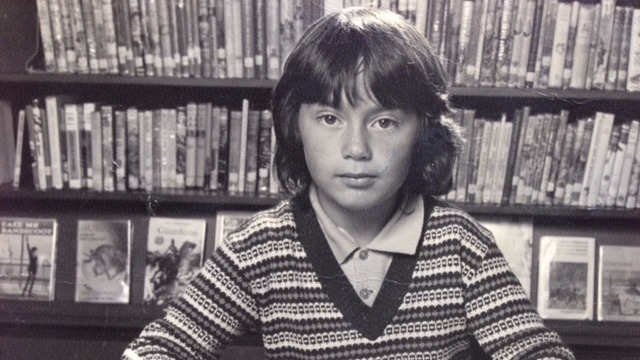
Friday nights out at the library
It’s a bit hard to pin down exactly where Darryn Joseph grew up, ‘West coast, East coast, town, farmlet, living in 17 or so houses. Indeed, we moved three times on the same street, and then we spent a whole year living in a caravan, in a caravan park in New Plymouth. Three boys, one girl and mum in a small caravan. I was 14. That was an education in communal living.’ But mostly, he grew up in Taranaki.
And it is Taranaki that holds the key to an enduring memory for Darryn — his family’s Friday night outing to the library. ‘For me, that was really rich. There were very few times that we went out as a family. It was quite late at night, the sun was down, the sound of cars racing their engines. Friday night in New Plymouth. Those Friday nights were one of the favourite things I did with my family.’
It was quite late at night, the sun was down, the sound of cars racing their engines. Friday night in New Plymouth. Those Friday nights were one of the favourite things I did with my family.
Darryn’s dad’s family came from the King Country. His dad, who had been brought up ‘almost as a bush urchin’, was a native Māori speaker up until he was about 15 when he was shipped off to live in Waihi with a Pākehā family, and never spoke Māori again. This meant that, apart from the odd phrase, there wasn’t a lot of Māori spoken in Darryn’s home when he was growing up.
‘We definitely got tikanga though. I still fondly recall returning to Te Tokanga-nui-a-Noho, and Ko Te Hokinga mai ki te Nehenehenui, where my kuia is buried, in the ‘70s with my dad and family. It was usually for tangihanga. We’d race around the marae with my cousins. My favourite memory is getting serial 20 cent pieces from my nannies who were playing cards out the back of the marae in Te Kuiti, and then walking across the railway tracks to play Space Invaders.’
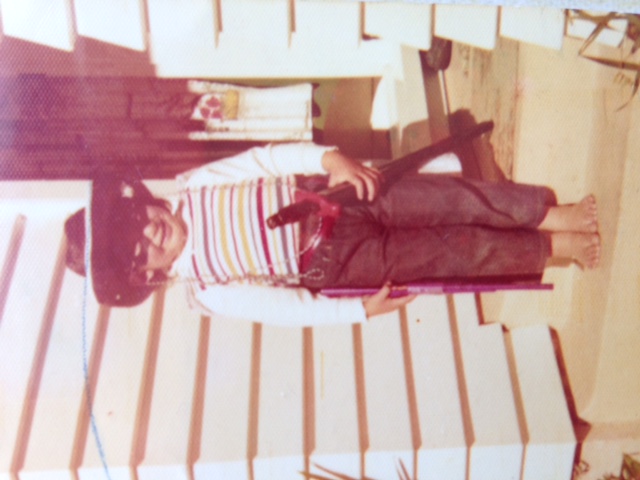
The luck of a black cat
When he left school Darryn had decided he wanted to become an artist, but he didn’t want to be a monolingual artist, so he made the call to study te reo Māori first. And, contrary to popular superstition, it was the day a black cat crossed his path that he knew he’d done the right thing.
‘[One day] I was walking home from my immersion course in Wellington … my thinking must have shifted, because I started seeing things in Māori, and the first thing I saw was this black cat walking across my path – but it was lucky for me. I thought, “he ngeru pango”. I remember saying, “Ah” in my head … “hey, I thought in Māori”. It was kinda cool.’
I saw was this black cat walking across my path – but it was lucky for me. I thought, ‘he ngeru pango’. I remember saying, ‘Ah’ in my head … ‘hey, I thought in Māori’. It was kinda cool.
More study came after, at the University of Waikato with John Moorfield, Te Wharehuia Milroy and Hirini Melbourne. And then a five-year stint as a Māori language teacher at Taranaki Polytechnic (now Western Institute of Technology at Taranaki), where, perhaps thanks to the gruelling schedule of teaching, he became fluent.
He has been at Massey University for the last 17 years. He had taken up study there when he was approached to write and research some textbooks. Later he moved into a Māori language teaching role, and he’s been there since. ‘First off, my work was primarily researching and writing textbooks for immersion education, which meant an opportunity to focus on writing in Māori. It was a great grounding – I had the Māori language background, but I had to relearn how to rewrite in Māori with different conventions.’ That time spent exploring the written word has supported the next phase of Darryn’s writing career – children’s fiction writing in reo Māori.
Trust and a trail of breadcrumbs
Up until recently, Darryn’s children’s fiction writing has been done at the request of a publisher, and often those requests come down to funding. And funding can be uncertain.
‘It’s quite tricky for me as an author. Often [the publisher] is not sure if they are going to be funded for another edition, so you’ve got to put your best foot forward as an author, you’ve got to [think], ‘this could just be a one-off, I need to do the best I can with it, in the timeframe I’ve got’ … I think any publisher who is actually really having a go at doing the Māori language trade, my hats’ off to them, because I’m not sure how commercially viable it is.’
I think any publisher who is actually really having a go at doing the Māori language trade, my hat’s off to them.
‘When I did my sci-fi series – that was commissioned as a one-off. I did put a few breadcrumbs in, and hoped that there was enough interest and richness that they would ask for more, and they did come back [with] funding, so yes, they could do some more, and in the second one – and again, a breadcrumb trail – everything was resolved, with the hope that there would be a third one.’
Revitalisation or imagination
This precarious journey to the birth of his trilogy RT3 highlights for Darryn a tension between Māori revitalisation and Māori literature. The funding for books in te reo Māori comes mostly through education funding, and this can have its own set of limitations.
‘I think works of literature at the moment are still a little bit wrapped up in the world of education, instead of giving authors in Māori free rein to develop their ideas. We are very tethered to what the education sector needs, and what we are ‘allowed’ to write about.’
‘Essentially, we are at a crossroad with Māori literature written in Māori. At the moment, I think we are a service industry, and we are servicing the need for the readership, but as we service the need, are we doing a disservice to the want? What do children want? (And there is enough research around what they want, but really you can just use your imagination to know what they want.) I am not sure if what they want is what we are giving them.’
I think we are a service industry, and we are servicing the need for the readership, but as we service the need, are we doing a disservice to the want?
‘Māori literature written is Māori is still at the developmental phase … a lot of literature in Māori is aimed at revitalisation, but it’s not aimed at being the best piece of literature it can be. There are a whole set of questions that should be wrapped around Māori literature – instead of asking, “how does it help with revitalisation”, we should be asking, “how does it sow fertile imaginations in Māori, or how does it expose children to new worlds, or give them a rich vocabulary and understanding about some of their emotions, or if they are lonely, how does a book give them a bit of a friendship when they need it?”’
Fuel for life-long learners
What might be a gauge of success for Māori literature in the future, then? Darryn has a pretty clear picture.
‘[Success will be] when the readership and reader population is big enough in Māori that it can sustain some form of adult fiction being produced in te reo Māori. That would be fabulous.’
‘If you look at the notion of life-long learning, if you look at life-long readers, board books, pictures books, chapter books, junior fiction, novels, we’ve got a lot of those covered in the Māori language, but once you leave school you can’t go to [a bookstore] and buy a book in Māori. You can learn Māori language at high school, and you can read to a very good level, but then when you leave you can’t carry on. What does that mean, there’s no sci-fi, there’s no romance, there’s no pop fiction, there’s nothing for adults – and for me, that’s pretty grim.’
Taking work to the world
Perhaps with this in mind, Darryn has made a conscious shift from being reactive to publishers’ needs and funding, to proactively sending out his own work – and with good results.
‘I’ve … pulled out some of the things I’ve done from the bottom of my drawer and sent them out into the world. A publisher has picked up on a picture idea that I’ve got, which is great. I’ve stopped doing the ‘wait for the publisher to contact me’, I’m pushing some work out there to see, because I’ve seen the value of some of the stuff I’ve written over the last few years, and it would be a bit of a waste to leave it in my journal.’
I’ve … pulled out some of the things I’ve done from the bottom of my drawer and sent them out into the world.
‘I have a journal, lots of scribbling in it including some poems, anything from my recipes, crazy … well, in Māori they are called pao, but I think they’re more like limericks. I use that little book to write down my process, to write down a whole lot of different genres, some that make it and some that don’t make it, into my creative writing. At the moment there are a lot of limericks, sometimes jokes, sometimes story fragments, characters.’
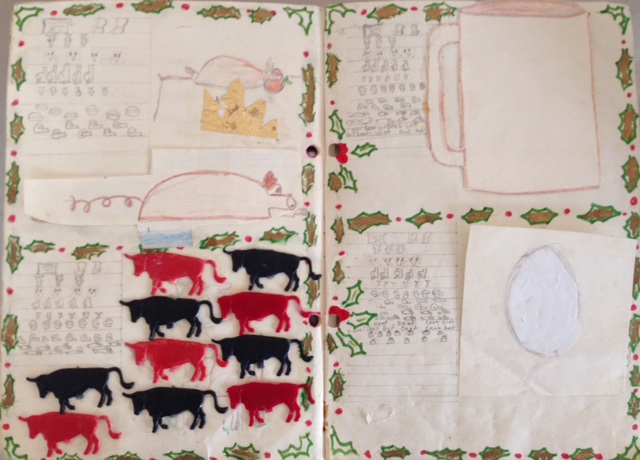
Finding the ‘real stuff’ in fiction
The settings in Darryn’s children’s books range from being on board a futurist battleship, the USS Barack Obama, to the distant past of Māori mythology, but even in these worlds, Darryn’s work explores things closer to home; themes of identity, reality and fantasy, and life on the margins. And he can quickly call to mind the books that have helped shape his love of that real-life/fantasy mix.
‘When I was growing up there was a quirky book called the Wonderful Flight to the Mushroom Planet by Eleanor Cameron. The reason I liked it is because it had a kind of a quirky story, but it was a problem/solution … It was a little bit mystery, a little bit sci-fi and just a nice story, and I still remember it 30-something years later.’
‘In my teenage years, I read a lot of [English Sci-Fi writer], John Wyndham. He wrote fiction books that have a little bit of fact in them … the author had used actual locations in the book … so you had [post-apocalyptic] fiction, but using non-fiction, real-life stuff … and in my work, even though a lot of my fiction is pretty out there, say, set in a biosphere, an imaginary biosphere in an imaginary desert, it uses real things. Like I explain really briefly how to build a solar still which will refine water, so I really like the idea of having ‘smart fiction’, where you have a good story, but just a little smattering of facts that resonate with the reader.’
The value of a random encounter
Getting feedback on his books has not come easy for Darryn. So he’s thankful for the few times when he has been out and about and received unsolicited responses.
‘I don’t know if it’s a common thing with Māori authors, but all of my books that I’ve written, I send them off into the school vacuum never to be heard of again, and so because I’m busy doing lecture stuff, I don’t have a lot of time to go into immersion settings and into schools and get feedback. I do get informal feedback, which is cool. I bumped into someone who said, “Tinirau Rāua ko Kae is my boy’s favourite, he wants it all the time”. When I was researching my PhD, I visited some teachers and some schools, and just to warm up I said, “I wrote that series”, and they kind of went, “Wha’, I have a boy in this class who loves that series, I wish they were there”. Without those random encounters, I wouldn’t really know.’
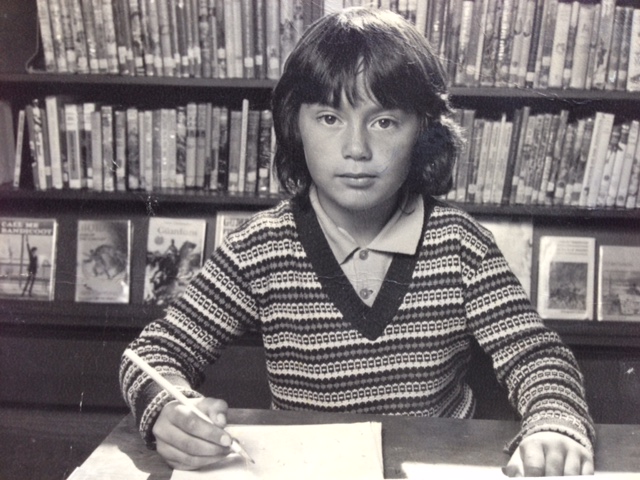
Doctoring words and going new places
Darryn has a few new projects on the go. As well as his new role at Storylines, he will be editing a children’s journal, and teaching a new creative writing course.
‘At Storylines, one thing we will be working with – just to be clear it wasn’t my idea – but we will be, funding permitted, implementing a Māori language prize. What that looks like we still don’t know yet, we are looking at what would best suit Māori language, to try and boost, try and get some interest. There has been a working party established by Storylines, investigating where the funding could come from.’
‘Another thing that Storylines has done this year, which is pretty neat, is that instead of having a Family Day just in Auckland, they have branched out and gone to the regions. The cool thing about the regional tour that I was part of [recently] is that I visited Kura Kaupapa Māori and Kohanga Reo, speaking Māori and taking my works in. I think that is another move by Storylines to target not only Mainstream communities but Māori communities as well.’
The cool thing about the regional tour that I was part of is that I visited Kura Kaupapa Māori and Kohanga Reo, speaking Māori and taking my works in.
‘Another cool project I am part of is the journal Toitoi, that encourages children to write. They have just invited me on as a guest Māori language editor, so what that means officially is that children, if they want to, can submit their creative writing in Māori, and it will come to me for an edit. If they need any assistance, and if it’s suitable it can be published, so we are really hoping that we get some traction in Māori language. The Toitoi team also really want to see Māori language illustrators. That’s a neat initiative that has happened in the last few months – kids can now send in their works, stories and poems in Māori.’
‘At Massey University we have just written Te Reo Auaha, a creative writing paper in te reo Māori. It’s at the third-year level, and looks at [working with] students who are semi-fluent in Māori and helping them, first of all, to develop a portfolio of creative writing, from little stories to vignettes to poetry to songs, [and to] write a short story in Māori, and getting their stories up to a level where they can submit to Huia short stories. We will also look at other writers in Māori and unpack their works.’
That is an innovative list to work with, and another critical step in his literary career. Going in new and innovative directions seems like a real feature of Darryn’s work thus far, but in terms of physical location, Darryn knows he’s in just the right place, ‘Palmerston North had been my home now for 17 years and it’s a great place to start a family and a creative career.’
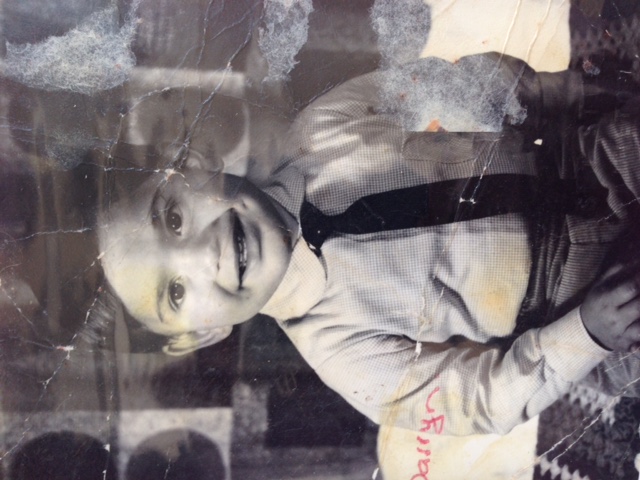
When a black cat crossed Darryn’s path, he managed to turn it into a good luck story. It’s his love of language, learning and creating, determination and the firm belief all children need books, that have really brought him his success though. And, with the same keen eyes of the kid in the corner of the library reading an Uncanny X-men comic, I get the sense that Darryn Joseph is constantly reading the quirks and stories in the world around him – and then, quite likely, turning them into something fantastical.
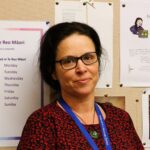
Kura Rutherford
Kura Rutherford (Te Rārawa, Ngāpuhi) is a school librarian, writer and editor, who lives in Tāmaki Makaurau. She grew up in Hokianga and Grey Lynn, before moving to Hawke’s Bay for 20 years with her husband, Dominic, to bring up their three daughters. She worked for 10 years in public libraries in customer service and community roles before becoming the sole charge school librarian at Taikura Rudolf Steiner School in Hastings. Now having returned to Tāmaki with her family, she works in the same role at Michael Park School in Ellerslie. She has been connected to Steiner education since she was 23 when she and her husband worked for a year at Hōhepa Farm in Hawke’s Bay, and all three daughters have attended Steiner schools. Kura’s writing focus is on health, education and literature, and she has written for The Sapling, Good magazine, EBSCO databases, Magpies magazine, and craft magazine Extracurricular. She has a special interest in supporting organisations in their te reo Māori strategic planning and development aspirations.



